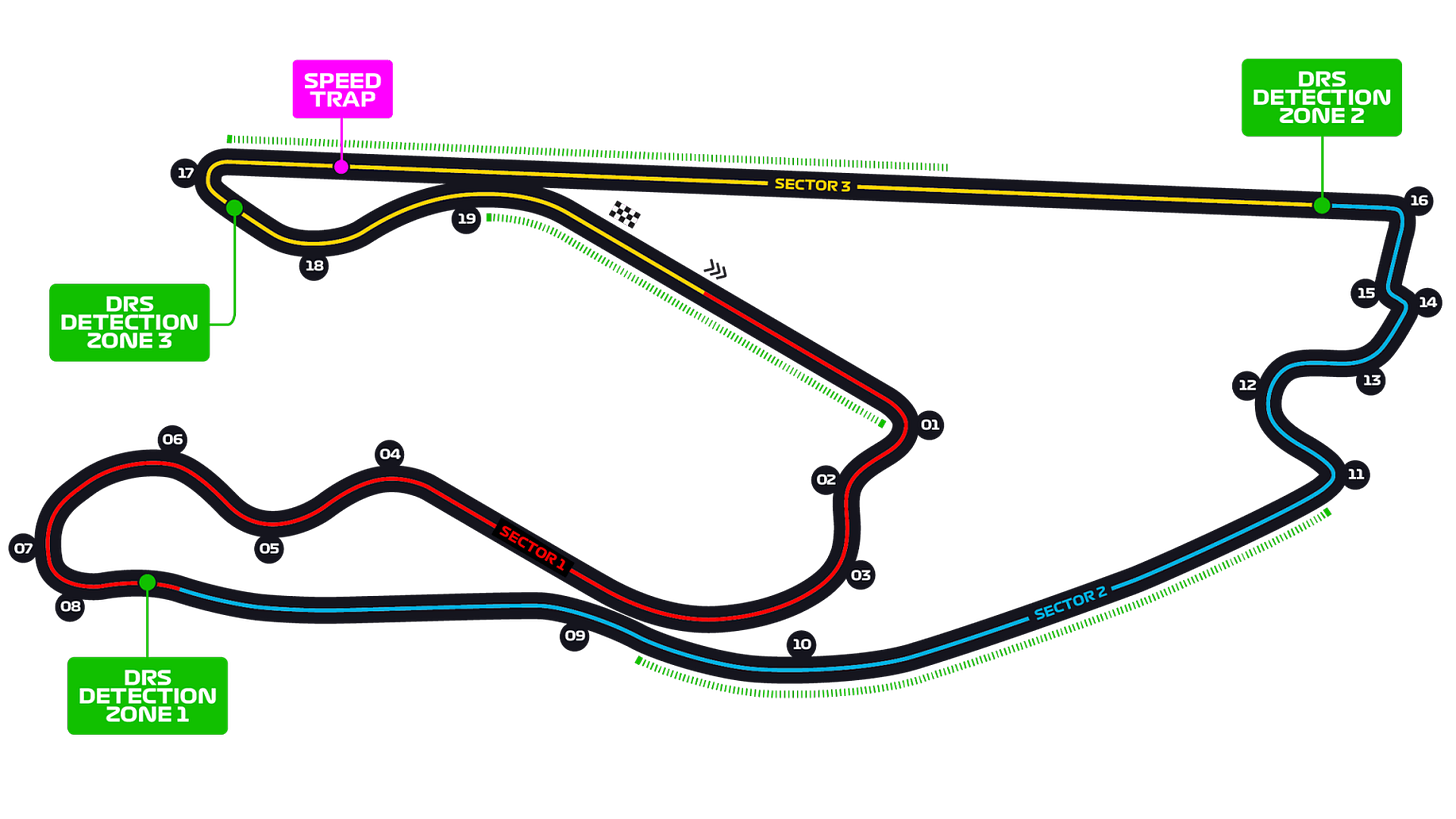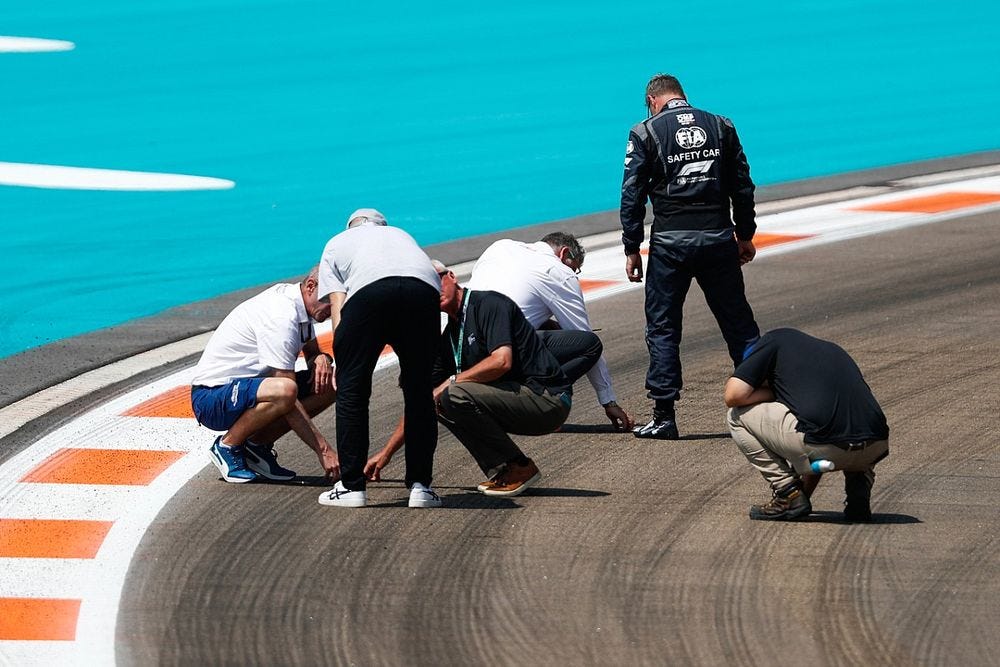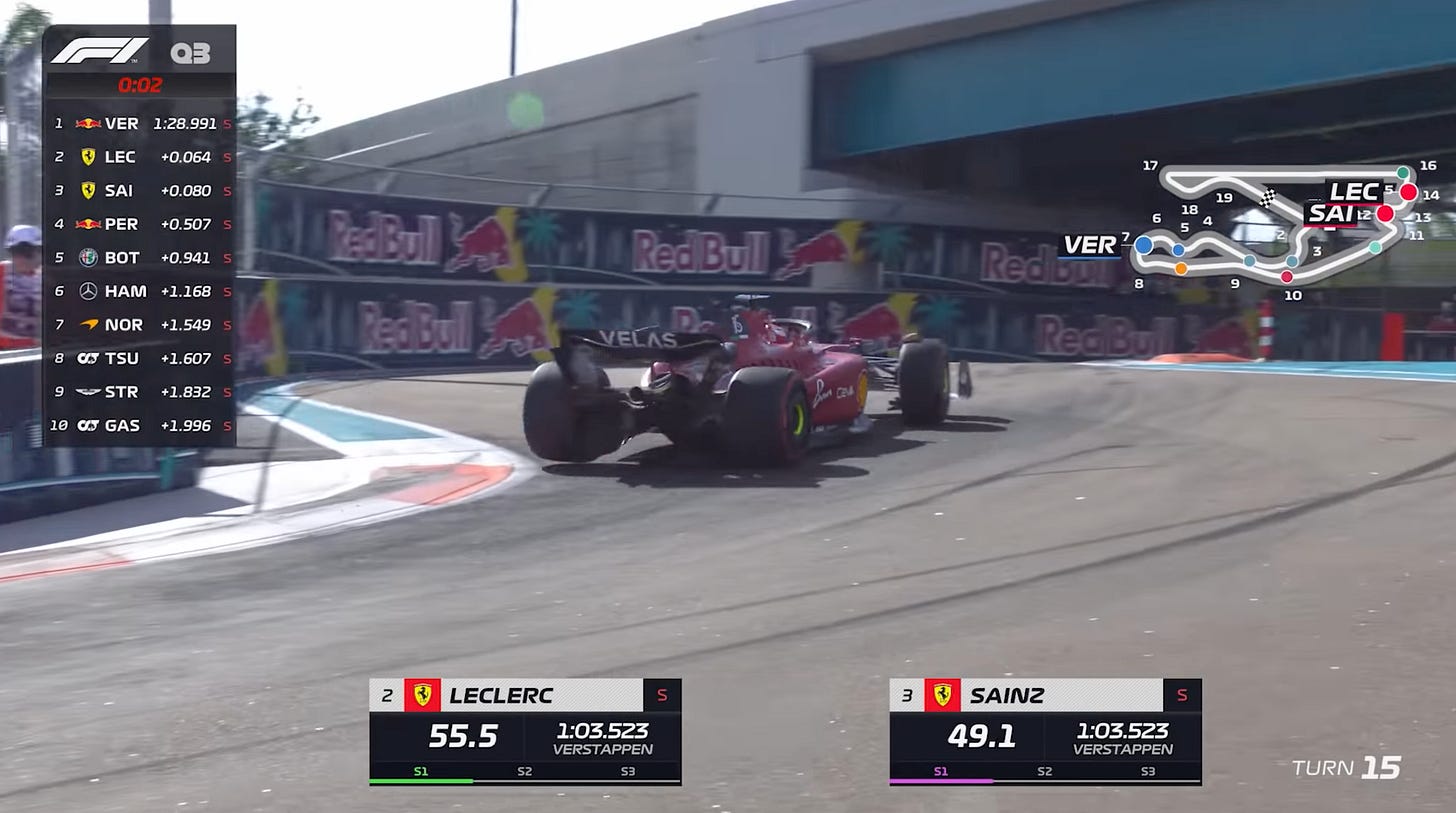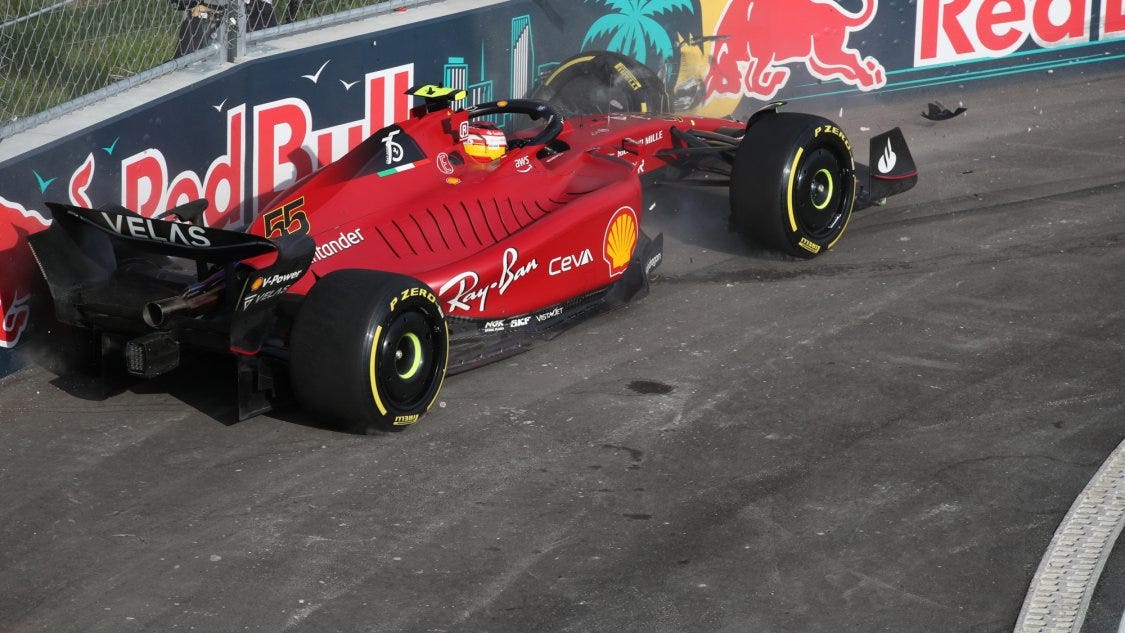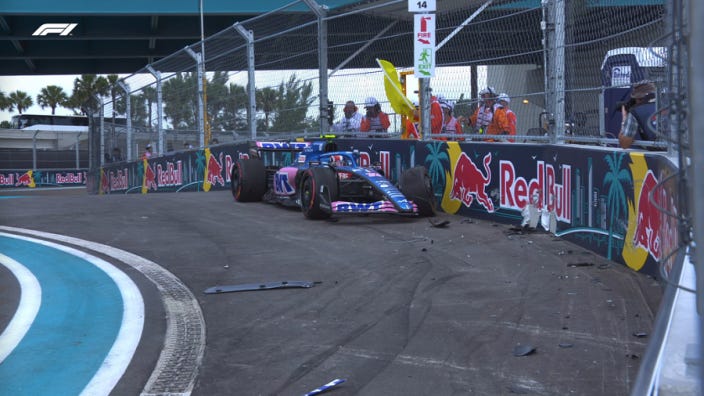The Miami International Autodrome (MIA) at the Hard Rock Stadium is the 76th venue to host F1, and the first in Florida since Bruce McLaren grasped his maiden F1 triumph at the 1959 US Grand Prix in Sebring.
MIA is unique. It’s constructed on the parking lots surrounding the Hard Rock Stadium, but it isn’t a parking lot track in the sense that the Caesars Palace Grand Prix in the early 1980s was. Nor is it a street circuit – though it’s frequently referred to as such. MIA is a permanent circuit, and constructed and graded as such – albeit a permanent circuit on which all of the visual surface furnishings will be removed after the race, allowing the land to revert to its usual operation as tennis courts, business and, yes, auto parking. The track that we've witnessed is grueling. It features some truly long straights in the style of Baku, high- speed corners in the style of Silverstone or Suzuka and an incredibly tight stadium section that has hints of Autódromo Hermanos Rodríguez but really isn’t like anything else on the calendar.
UK firm Apex Circuit Design has designed the 3.36- mile anticlockwise circuit with an anticipated lap time of 1m35s and an average speed of just under 135mph. Paving the track needed tons of asphalt, which was laid out over yards in echelon over three lanes for an average track of 50- feet width. The Track is divided into high speed corners all through turns 2 to 8. With some sharp corners in the second sector. Turn 14, 15 and 16 pose a significant challenge to drivers due to the change in elevation both entering and exiting the 3 corners. The third sector featuring the long straight where we are bound to witness majority of the overtakes. The new circuit poses a challenge as none of the drivers have raced here before which could level out the competition for some of the veterans.
There has been a general feeling of disappointment with Miami for several reasons after Friday’s running with lot of let downs compared to the hype and promises. Despite the stadium, cable cars, and fake marina dressing, it still feels like it's in an empty parking lot next to an ugly highway, while running under the turnpike and along the waterway was something we thought would be cool but watching on TV it's just sad. The circuit really lacks flow, the pit exit is problematic and even the pit entry line's a bit of an issue. And this is supposedly a brand new Grade 1 Formula 1 track built with all this high tech know how and yet it's bumpy, breaking up already. The temporarily-laid circuit breaking up into sandy grit and killing the grip was obviously predictable, this happens so often with quickly-laid/quickly-removed solutions.
Some of the mistakes drivers were making after going off-line, even briefly, made it pretty clear what sort of trouble they'll have on Sunday trying to pass. If the DRS is powerful enough they might be able to get a drive by pass and regain the line before braking, otherwise it might be a mess. Even if they can regain the line before the braking zone, if they have picked up dust/marbles off-line (which they will) they will still be in sub-optimal grip territory. If we’re lucky that could just add some extra spice, increasing the challenge of maintaining the lead into and through the corner but not completely deterring drivers from making the attempt. The Miami International Autodrome is holding its first grand prix this weekend and the concrete barrier used at turn 14 has become a focal point of criticism after two crashes within 24 hours.
Sainz and Ocon lost control of their cars in separate incidents at turn 13 on Friday and Saturday and both hit the barrier at turn 14. The Alpine driver had crashed into the concrete barrier at Turn 13 during practice earlier that day, suffering a 51G impact. Although the driver was okay, he had to be taken to the medical center due to the force triggering the impact warning light. His car ended up with a cracked chassis and Ocon had to miss qualifying because of it. Both drivers along with others have raised concerns about the concrete barier in place, and have requested for using tecpro barriers instead, even though changing so in such short intervals before the race might not be entirely possible it is expected for the FIA to atleast consider these serious saftey concerns.
In another modification the FIA has decided to remove the two kerbs at the left & right chicane at the pit entry, and replace them with bollards. Issues with the track surface first arose on Thursday before any proper circuit action, after safety car and VIP lap activity. Patches of damage appeared at both Turn 17, the hairpin before the start & finish straight, and Turn 7, the tightening left hander on the outside of the fake marina. Both instances were believed to be due to a specific issue with the surfacing process at those particular points, and therefore there were no fears that other region of the track would be affected. The distressing areas were resurfaced on Thursday night in time for Friday’s practice session. Yet, on Friday night it was decided to have another attempt at resurfacing Turn 17, while also taking over some additional work on the exit of the corner, which hadn’t preliminarily been addressed.




